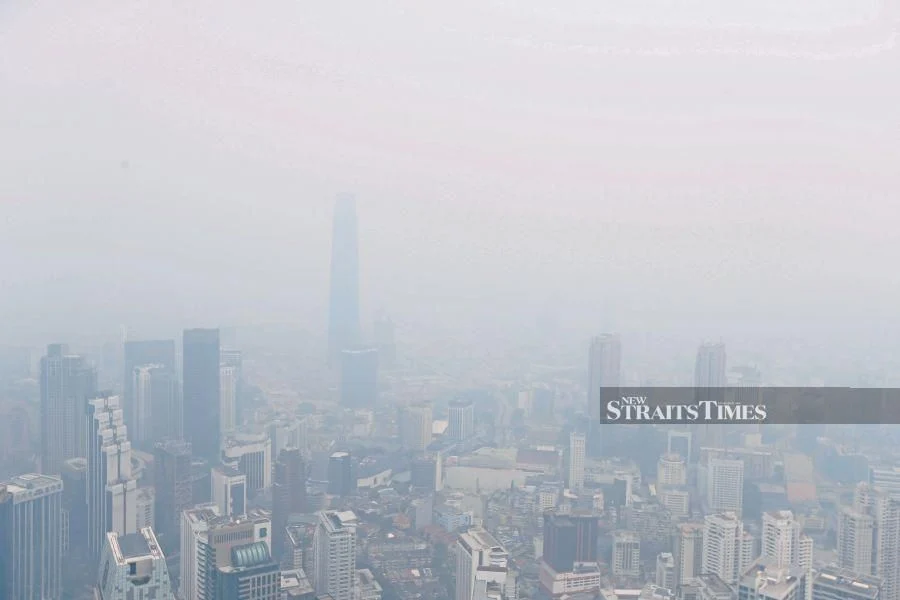
Most of the countries in ASEAN have tropical weather and are exposed to scorching sunlight for the whole year. This weather pattern makes some areas experience drought, especially during the dry season. As a result, water availability can be a challenge.
Jakarta, the capital of the ASEAN member country Indonesia, has recently become a hot topic of conversation in international media. Based on data from IQAir, a Swiss company’s pollution survey, Jakarta was identified as the world’s most polluted city. Jakarta’s air pollution has been getting worse, with traffic congestion, factories, and coal-fired power plants contributing towards smog. This smog ultimately has an impact on people’s health, making it a cause of concern.
The other ASEAN countries also experienced issues with air quality earlier this year. Laos, Myanmar, and Thailand all faced air pollution problems, which stemmed from burning agricultural waste during the dry season.
These issues had a significant impact on the locals. They reported worsening lung disease problems caused by this phenomenon. If this continues, the number of victims will increase and it will be difficult to treat quickly in critical conditions. Apart from patients, environmental treatment is more necessary.
However, air quality challenges in ASEAN countries are being actively addressed. Representatives from ASEAN Members were gathered to follow-up on these issues above. Last June in Singapore, representatives from ASEAN held a meeting to discuss strategies for dealing with haze pollution. The outcome from this meeting was an agreement to implement measures to disincentivize air polluting practices (ex. open burning of unwanted burning waste). Representatives also agreed to support initiatives that utilize technology to help mitigate fire risks, which can aid in reducing air pollutants.
Furthermore, the 18th Meeting of the Conference of Parties to the ASEAN Agreement on Transboundary Haze Pollution in Vientiane, Laos generated a new strategy named “Clear Sky”. This strategy serves as the second road map of ASEAN’s 2023-2030 haze-free initiative, which aims to improve air quality and sustainably reduce haze.

Alongside progress by way of policy and strategy, technology may play a major role as well. An assistant professor of mechanical engineering, Thomas Schintzius, recently published a paper with his colleagues in Nature Sustainability. This latest research builds upon work by Ritwick Ghosh, a researcher whose work focuses on removing contaminants from fog using polymer coating. The work by Schintzius et al. envisions a solar-powered system that removes pollutants from fog/smog and produces water. It is called “water harvesting”. It filters fog water droplets into collected water that is safe to drink as the output of the way of this system works.
Data reported in the research by Schintzius et al. support the use of the described technology and processes in outdoor conditions. Furthermore, the data supports use during low-light conditions (ex. during cloudy days) as well. Schintzius stated “We then performed outdoor tests, where the water treatment efficiency of the TiO2-PVB-PDMS reactive mesh was over 90% under high UV index conditions and a respectable 85% when the UV index was zero.” In other words, the solar powered system is able to function outdoors and with little UV light available. Systems such as the ones described by Schintzius et al. may one day be used to mitigate drought and smog difficulties in ASEAN countries.
Although water scarcity and air pollution continue to be concerns in ASEAN countries, the creation of concrete ASEAN strategies to address these issues and recent research developments show that progress is being made. Many ASEAN countries are clearly committed to tackling the discussed air and water problems. Perhaps the work of Schintzius et al. may find real-world application in the near future.

About the Author
Hello! I am Sekar Pitutur Arum Jati, a writer’s volunteer at AYO Post. I do writing and playing piano as a daily habit. My motto is “Life is like the climb, but the scenery is beautiful”. Recently, I am interested in learning Chinese, including language and culture, to gain new skills that fit with my subject.